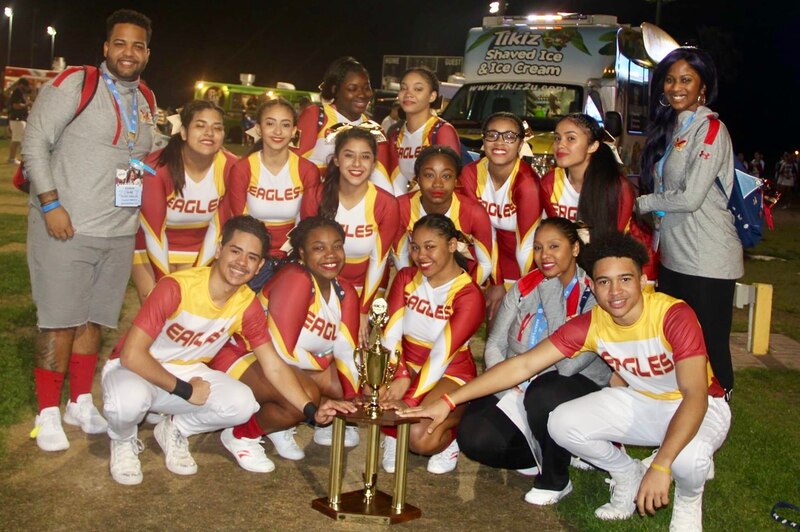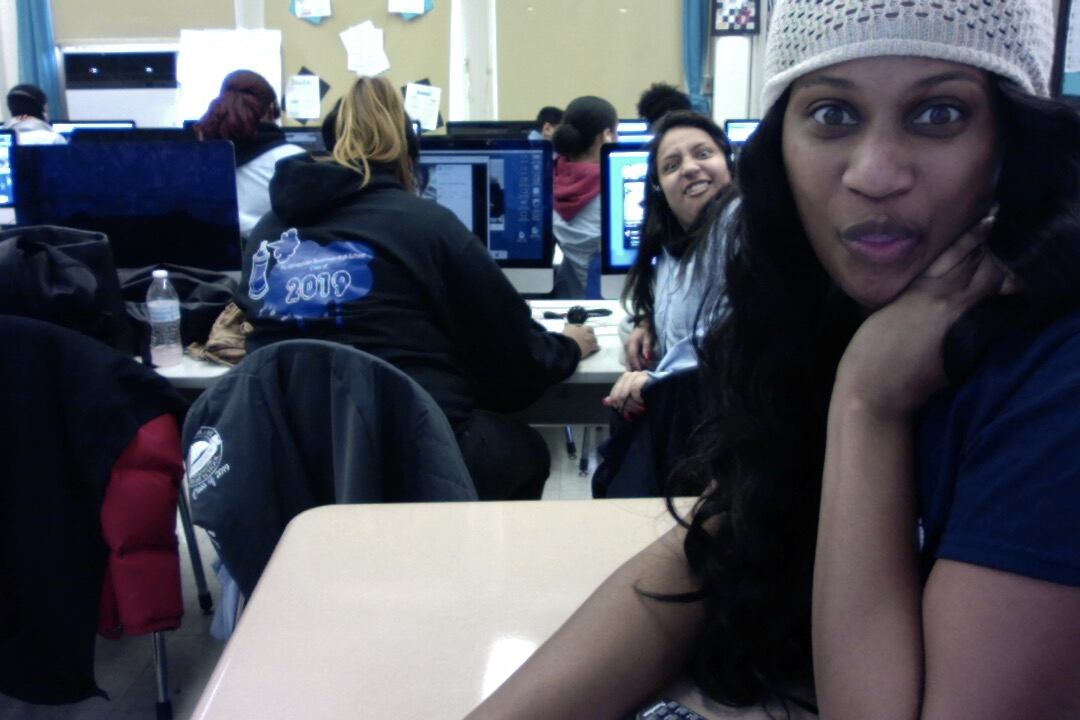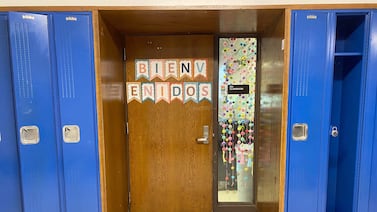Metropolitan Soundview High School had no art program when Cheriece White took a job there 10 years ago.
So she created her own.
The art and technology teacher initially designed a curriculum around digital storytelling and then transformed it into a multimedia art curriculum that included iMovie, storyboarding, illustration, children’s books, and front-end web design. The students gravitated to the web design part, wanting to know more about designing websites for their own business ideas. That prompted White to shift again, developing a curriculum on social media design and content creation.
“With how social media, graphic design, and technology are growing into every aspect of normal living, it is super important to have students practice these skills for their own benefit,” she said. “They are going to engage in social media and technology anyway, so why not teach them how to make money from it through design?”
White not only sees visual arts and graphic art as “great emotional outlets for kids this age to express themselves in a healthier and positive way.” She also wants her art course to provide a “tangible” way for them to become young entrepreneurs.
She wants her students to be college- and career-ready, as well as “small business ready.”
She’s hopeful that it’s working. Former students have gone on to create a cupcake company, a dog-walking business, a baseball clinic, and an Etsy digital download business. A group of current students who already have their own clothing brand recently told her how their social media following increased significantly after applying some techniques they learned in class.
White was the Bronx’s grand prize winner of the 2022 FLAG Award for Teaching Excellence, which honors educators who inspire creativity and passion. For winning the prestigious award, White’s school received $10,000, which she used to buy easels, paint, brushes, canvases, pallets, and markers for her monthly “paint and snack sessions” with students. She ordered some technology, including software licenses and Apple Pencils for drawing digital illustrations.
She also received $25,000 in unrestricted funds. White, who had a baby shortly after winning the award, used some of the prize money to invest in her son’s 529 college savings account and also plans to use some of it to further her own education in the growing field that she’s trailblazing.
This interview has been lightly edited for length and clarity.
How and when did you decide to become a teacher?
My little brother, 12 at the time, is the one that changed my career path [from media marketing] to what it is today. He asked me why I looked so sad. I told him all I wanted to do was graphic art and prove how important it was to learn these skills with how the use of computers was growing. But it was 2009, companies were closing, and there were no jobs. He said then why don’t you become an art teacher?
I explained that the type of art that I wanted to teach was not offered. He said, at 12, “Well, why don’t you become the teacher you never had and create the type of art you want to teach? Prove them wrong and show them the world needs your art.” I went back to school, received my master’s in K-12 art education, and started my hunt for a school that believed in my vision and would give me a chance to execute the curriculum that I wanted to build.
How do you fuse art and technology, and why? Why do you think these skills are so important for students to learn right now?
In my class, it’s important to introduce the foundations of visual arts, like elements of design, principles of design, and color theory, with graphic design platforms that lead to content creation to launch small businesses. Students are extremely engaged with social media but don’t know how powerful of a tool it can be if used to represent a brand or service.
While learning about color theory, students learn about color psychology and how that affects marketing design. While learning composition and layout, they are practicing their mathematic skills by measuring margins, bleeds, and pixel-to-inches conversions. While designing a logo, students also practice project-based learning and design thinking. The combinations are endless, and the result is a student that is well-rounded in all aspects of visual art, technology, and marketing design.
What’s your favorite lesson to teach and why?
My favorite project-based lesson that I love to teach is logo design and branding. Students find a way to impress me by creating these beautiful logos that would match their target audience. Seeing all these beautiful portfolios come together for different businesses that they can actually do in real life just warms my heart.
I also recently coupled with a STEM teacher to make a STEAM unit and do a Shark Tank lesson together. This is a lot of fun because the students then take all of their designs from my art class and their inventions from their STEM class and start to pitch judges, like our principals and guidance counselors. The students take the challenge head-on and produce amazing interactive slide decks. This year, the winners will receive an iPad.
What’s something happening in the community that affects what goes on inside your classroom or your school?
I teach in a very low-income area, and many students definitely have the burden of that on their shoulders. When it comes to having the correct finances for things for school or school trips, some students just can’t participate because they don’t have the funds. Also, there is a lot of violence outside of our walls that we like to shield them from or show them that there’s a better outlet to release your anger or stress.
Some students have to work jobs in order to provide for their families, and certain students still may be in shelters but are embarrassed to let us know that they may need some help. And some students may not have enough money for their next meal, so they stay after school so they can have the free lunch and after-school lunch for dinner. This truly breaks my heart and is one of the main motivators in why I started my curriculum: To show them that they could start a business without any money and pull themselves out of a situation as long as they have the skills necessary to do so.

Tell us briefly about the cheerleading squad you helped found and how they got to go to Nationals.
I and two other coaches started the first-ever cheerleading team at James Monroe Campus. We called ourselves the James Monroe Eagles. This was by far the proudest moment in my career as an educator. Our team was spectacular and won first place in our division at regionals. This won us a bid to go to Nationals at Disney World in Orlando.
However, the cost to participate was way too much for our kids’ families. So I put together a video of our kids asking for help to go, made a GoFundMe for them, and within 72 hours, we raised over $30,000! New York City news outlets came to wish us luck, and we invited the community to wish us farewell and good luck. Some students had never been on a plane before, let alone to Walt Disney World. To see the kids be in shock looking at a palm tree or feeling the warmth in February in a tropical climate brought tears to all of our eyes. We won seventh in the nation, but that whole experience made all of us feel like we were in the first place.
Amy Zimmer is the bureau chief for Chalkbeat New York. Contact Amy at azimmer@chalkbeat.org.









